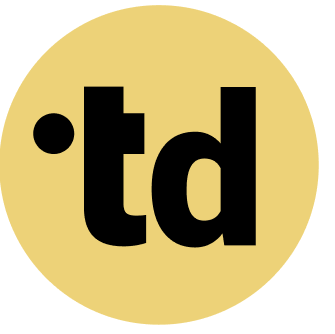Key Takeaways
Creating accountability for AI agents starts with defining their roles and responsibilities, just as you would for a human team member.
The upcoming EU AI Act makes AI governance a legal requirement, with fines up to €35 million for non-compliance, making accountability essential.
A structured approach to hybrid team design, including clear handoff protocols and human oversight, can reduce ambiguity by 80 percent and boost productivity.
Integrating AI into your workforce can feel like navigating a storm without a map, leaving many teams wrestling with overload. This gap between investment and maturity creates a critical accountability vacuum where nobody owns the outcomes. The hero of this story is your team, battling ambiguity to find a new way of working. With the right framework, you can conquer the common pitfalls of human-AI collaboration. This guide provides the blueprint to transform your hybrid workforce into a streamlined, productive unit, making change feel like play.
The End of AI Anarchy: Why Accountability Is Non-Negotiable
Unstructured AI adoption creates significant operational hurdles. A lack of a clear AI strategy is a primary obstacle for many German companies, leading to project delays and cultural resistance. This ambiguity isn't just inefficient; it's a looming compliance risk that leaders must address.
The European Union's AI Act is set to transform the regulatory landscape, making formal governance mandatory. This legislation establishes a risk-based approach, with AI systems in personnel management often classified as high-risk. Organizations that fail to comply face severe penalties, including fines of up to €35 million or seven percent of global revenue.
This new legal framework requires clear documentation, transparency, and human oversight for AI systems. For Team Architects, this means the era of experimental AI integration is over. Now is the time to build a robust framework for AI governance, turning a legal requirement into a competitive advantage. Proactive accountability structures are the foundation for scaling hybrid teams successfully.
Make Bots and Humans Click: Define AI as a Team Member
To solve the accountability puzzle, you must treat your AI agent like any new employee. It requires a defined role, clear responsibilities, and access to the right company data to perform its job effectively. More than most business leaders believe AI agents will fundamentally transform their organizational structure.
Instead of viewing AI as a black-box tool, successful Team Architects onboard it as a digital collaborator. This reframes the entire dynamic from simple automation to true human-AI teaming. You can try teamdecoder for free to map these new roles. Defining the agent's purpose is the first step toward clarity and away from chaos.
Here are four common roles an AI agent can assume in your team structure:
- The Data Analyst: Continuously monitors KPIs from multiple sources and flags anomalies in seconds.
- The Project Coordinator: Handles scheduling, sends reminders, and updates task statuses across platforms 24/7.
- The Research Assistant: Gathers and synthesizes information from thousands of documents to support strategic decisions.
- The Workflow Automator: Manages repetitive handoffs between systems, reducing human error by over 90 percent.
Assigning a specific role clarifies the agent's contribution, making it easier to measure its performance and integrate it into your hybrid team platform. This simple shift in perspective prepares the ground for a truly collaborative environment.
The Architect's Playbook for AI Accountability
With a role defined, the next step is building a system that ensures the AI operates responsibly. This requires a deliberate approach to designing your team's workflows and interaction protocols. A structured framework helps meet the diverse requirements of the organization while adhering to all compliance requirements.
Effective governance is not a one-off activity but a continuous process of oversight and refinement. A clear playbook ensures every team member, human or AI, understands their part in achieving the team's goals. This is central to building effective AI and human roles.
Follow these five steps to establish a robust accountability framework:
- Map All Team Outcomes: Before assigning any roles, define what the team must achieve in the next 90 days.
- Assign Roles to Humans and AI: Designate who is responsible for what, ensuring there are no overlaps or gaps.
- Define Interaction Protocols: Clarify handoff points between humans and AI, which can reduce ambiguity by up to 80 percent.
- Establish Human Oversight: Define clear roles for human review, override, and escalation to mitigate risks.
- Create Feedback Loops: Build a process for humans to correct and train the AI, improving its performance by at least a portion of each quarter.
This playbook provides the structure needed to move from confusion to clarity, setting your hybrid team up for success.
Teams Just Wanna Have Fun: Building Trust in Hybrid Work
Accountability is built on a foundation of trust and transparency. For human-AI teams to thrive, employees need to understand how AI agents make decisions and use data. This is a major concern for most European workers.
The EU AI Act mandates that users must know when they are interacting with an AI system. This transparency is not just about compliance; it is about building the psychological safety needed for genuine collaboration. When people trust the technology, they are more likely to use it effectively.
Leaders can build this trust by involving the team in the AI integration process. Germany's Works Council Modernisation Act, for example, gives employee representatives consultation rights for AI use in work processes. This collaborative approach demystifies the technology and gives people a stake in its success. It turns a potentially threatening tool into a trusted partner.
From Output to Outcome: Measuring AI Performance
An accountable agent is one whose performance can be measured against clear goals. Just like any team member, AI agents should be tracked with KPIs that reflect their contribution to team outcomes. This moves the conversation from what the AI *does* to what it *achieves*.
For an AI agent in a customer service role, you might track metrics like resolution time or customer satisfaction scores. An agent focused on data analysis could be measured by the accuracy of its forecasts or the number of critical trends it identifies. This data-driven approach provides objective proof of the agent's value.
Regularly assessing these deliverables is a core part of governance. It allows you to refine the agent's programming, adjust its responsibilities, and ensure it aligns with corporate values. With clear metrics, you can confidently scale your hybrid team's performance and demonstrate a strong return on your AI investment. See our pricing.
Conclusion: Your Team, Redesigned for Tomorrow
The journey from AI chaos to hybrid clarity is the modern team's great challenge. By architecting clear roles, building robust accountability frameworks, and fostering trust, you equip your team to conquer complexity. You transform AI from a disruptive force into a reliable, high-performing teammate.
This structured approach to organizational development turns the abstract concept of human-AI collaboration into a practical reality. It red It reduces overload, boosts productivity by over a significant portion, and gives your team the tools to win.ture of work is not about replacing humans, but about augmenting their talent with intelligent, accountable AI agents.
Try teamdecoder for free - shape your team and make change feel like play!
More Links
Wikipedia provides a comprehensive overview of Artificial Intelligence.
Germany's AI Strategy outlines the official strategy for Artificial Intelligence in Germany.
Deloitte offers insights into innovation and AI from a German perspective.
Fraunhofer IAO discusses how companies can unlock their AI potential.
Bitkom provides a press release on the German economy's acceleration in Artificial Intelligence.
German Federal Ministry of Labour and Social Affairs details the role of Artificial Intelligence in the digitalization of the working world.
acatech explores human-centered AI in the working world.
PwC focuses on responsible AI from a German perspective.
FAQ
What is the first step to creating AI accountability?
The first step is to treat the AI agent as a new team member. This means clearly defining its role, responsibilities, and the specific outcomes it is expected to achieve. This clarity is the foundation of any effective accountability system.
Why is human oversight so important for AI in teams?
Human oversight is crucial for several reasons. It's a requirement for high-risk systems under the EU AI Act, it allows for course-correction when an AI makes an error, and it builds trust among the human team members who need to rely on the AI's work.
Can teamdecoder help with AI agent integration?
Yes, teamdecoder is designed to bring clarity to complex team structures, including hybrid human-AI teams. Our platform helps you map out roles, define responsibilities, and visualize workflows so you can create a clear and accountable structure for every member of your team, human or AI.
How do you build trust in an AI agent?
Trust is built through transparency and reliability. Teams build trust in an AI agent when they understand its function, see it perform its role consistently and accurately, and have a clear process for providing feedback or overriding its actions when necessary.





